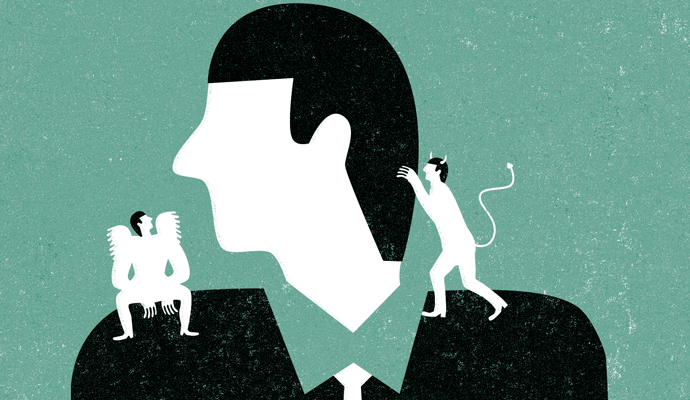Pitchforks and Torches over CEO Pay? Maybe Not
A higher pay differential between CEOs and their employees may encourage employees to work harder, not to slack off.
(originally published by Booz & Company)Bottom Line: Contrary to popular belief, a higher differential between CEOs’ compensation and that of regular employees does not lead to lower worker productivity or more slacking off on the job. In some cases, employees are actually motivated to work harder by the gap in pay—and to close it by moving swiftly up the corporate ladder.
Everyone knows CEOs are wildly overpaid and their employees resent them for it, right? The media loves to stoke the public’s outrage by focusing on the gap between the compensation of CEOs and rank-and-file employees, especially during economic downturns. And the gap keeps widening. A 2005 report found that the average CEO in the United States earned 431 times what a non-management worker made in 2004, an increase from 301 times in 2003 and 42 times in 1982.
But a new study suggests that if the employees of these CEOs are bitter about this imbalance, it doesn’t show in their work. The authors found no evidence that a higher pay differential leads to reduced employee productivity or lower firm performance. Instead, some employees appear to view the higher executive compensation as an incentive to work harder—especially at smaller companies where promotions are based on merit rather than seniority.
The authors based their findings on an analysis of executive compensation data for firms in the S&P 1500 indexes from 1993 through 2006. The average worker in the sample brought home US$59,870 a year, while the average CEO earned $4.6 million.
The pay differential between top executives and regular workers is largely a result of the bargaining power wielded by the parties, the authors found. The gap tends to be wider at companies where CEOs enjoy strong influence over the board or also act as chairman, and narrower at firms with unionized or highly skilled employees, who are more difficult to replace.
Using several measures of productivity and firm performance, the authors consistently found no link between higher pay ratios and employees shirking on the job. They also broke their sample into subsets to examine scenarios in which employees might feel more justified in behaving resentfully because of their CEO’s compensation: firms whose employees were more likely to know what their top executives were being paid because the CEOs were explicitly mentioned in media articles on the compensation debate, or highly unionized workforces whose employees faced a lower risk of managerial retribution for slacking on the job. And they looked at firms with particularly high R&D expenditures and a large proportion of highly skilled workers. Presumably, this last set of companies would have a tougher time justifying large compensation packages for their CEOs because so much of their value was driven by employees’ innovation efforts rather than top management.
In all these special cases, the authors found no relationship between employee productivity and the pay gap. “Thus, employees do not respond negatively to higher pay ratios even in organizational settings where they are most likely cognizant of such differentials, are well protected via unionization, and have plausible reasons to believe that top management is not the primary contributor to firm performance,” the authors write.
In fact, just the opposite proved true. At certain companies, the authors found that some rank-and-file workers see an opportunity for their own advancement and eventual higher compensation when the pay gap is wide. This does, however, depend on certain conditions. At companies with relatively few employees (less than 3,250 in this sample), who can move up the corporate ladder more quickly, even a small increase in the relative pay of CEOs and regular workers led to a boost in productivity of 10.5 percent, the authors found. Productivity also increased when employees were well informed about their CEOs’ pay because of news stories and when promotions were merit-based. On the other hand, the pay gap had no positive effect on employee productivity at large or heavily unionized companies.
As the authors note, the Great Recession reignited a passionate public debate about how much CEOs should be paid, with some analysts and legislators calling for laws limiting CEO–employee compensation ratios. Although well intentioned, the authors write, these moves “are likely to impose unintended costs on some classes of firms while not benefiting others.”
The authors didn’t identify an optimal pay gap that would ensure employees’ increased productivity, as that ideal number is likely to be highly dependent on industry, firm size, and other company-specific variables. And although no one’s suggesting that CEO pay packages should skyrocket as a matter of course, this study shows the issue is far more nuanced than the headlines might have you believe.
Source: The Determinants and Effects of CEO–Employee Pay Ratios, Olubunmi Faleye (Northeastern University), Ebru Reis (Bentley University), and Anand Venkateswaran (Northeastern University), Journal of Banking & Finance, August 2013



